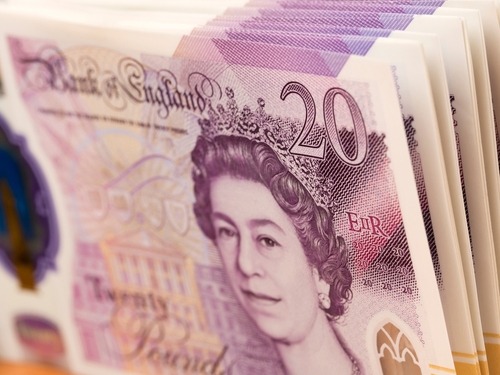Trading the British Pound’s Recent Collapse Against the Dollar
It's been a big year for the U.S. dollar, and during the last week of September the greenback rallied sharply against the British Pound

The U.S. dollar continues to reign in 2022, and during the last week of September it claimed another victim—the British pound.
On Sept. 26, the Pound/Dollar exchange rate dropped to its lowest level since 1985, dipping as low as $1.03 during intraday trading. The pound has since rebounded, and is currently trading at roughly $1.11.
For active foreign currency traders, it was undoubtedly a shock to see the pound drop to such depths against the dollar. Traditionally, the pound trades at a strong premium to the dollar. Back in 2007, for example, nearly two U.S. dollars were required to purchase a single British pound.
Over the last 12 months, the pound had been trending lower versus the dollar, like many of the world’s major currencies. But the pound’s slide intensified last week when the new Prime Minister of the United Kingdom, Liz Truss, announced sweeping fiscal changes that are intended to help catalyze economic growth in the region.
Not surprisingly, it was the dreaded “i” word (inflation) that appears to have spooked global currency markets.
As part of its new economic plan, the UK government intends to cut taxes, which in turn is intended to boost spending. And while increased spending could help bolster economic growth in the UK, it could also create higher levels of inflation.
Rampant inflation has been a common theme throughout the world in 2022, but in the UK, inflation has been running even hotter than the levels observed in the U.S. As of August, 12-month core inflation in the UK was running at roughly 9.9%. In comparison, U.S. core inflation figures were closer to 6.3% during the same period.
Accounting for the rising cost of food, those numbers jump to 13% in the UK, and 8.5% in the U.S., respectively. Considering those jaw-dropping figures, it’s no surprise that currency markets reacted negatively to a plan that could push record inflation even higher in the UK.
The UK’s plan to cut taxes also impacts fiscal forecasts. With no corresponding plan to raise government revenues, the net result of this plan is a higher debt burden. And with these new fiscal/economic anchors weighing on the country’s finances, something had to give—namely, the pound.
That said, the pound isn’t the only major world currency to suffer significant losses against the U.S. dollar in 2022. The South Korean won sank to a 13-year low against the dollar earlier in September, while the Japanese yen fell to a 24-year low in recent trading. During summer, the euro traded 1-for-1 against the dollar for the first time in nearly two decades.
Amazingly, the Chinese yuan has finally broken down against the dollar in 2022, as well. The yuan was one of the few world currencies to strengthen against the dollar in 2021, but that trend finally reversed in April of this year. The USD/CNY exchange rate is currently trading 7.12, which represents the dollar’s strongest level against the Chinese yuan since the start of the COVID-19 pandemic.
As a reminder, exchange rates are typically quoted using the format “ABC/DEF,” and are interpreted to mean that the first currency listed is a single unit, while the exchange rate itself represents the amount of the second currency that is required to purchase a single unit of the first currency.
In the case of the USD/CNY, that means 7.12 Chinese yuan are currently required to purchase a single U.S. dollar. And in the case of the Pound/Dollar (GBP/USD), that means roughly $1.11 in USD is required to purchase a single pound.
The learn more about trading foreign currencies—including more background on the pound’s recent collapse against the dollar—check out this new installment of Splash Into Futures on the tastytrade financial network.
For daily updates on everything moving the markets, check out TASTYTRADE LIVE—weekdays from 7 a.m. to 4 p.m. CDT.
Sage Anderson is a pseudonym. He’s an experienced trader of equity derivatives and has managed volatility-based portfolios as a former prop trading firm employee. He’s not an employee of Luckbox, tastytrade or any affiliated companies. Readers can direct questions about this blog or other trading-related subjects, to support@luckboxmagazine.com.




















